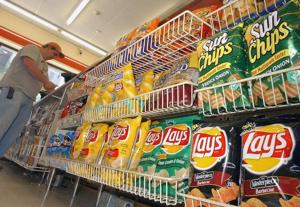Whether they know it or not, most Americans don’t go a day — or often a single meal — without eating ultraprocessed foods. From sugary cereals at breakfast to frozen pizzas at dinner, plus in-between snacks of potato chips, sodas and ice cream, ultraprocessed foods make up about 60% of the U.S.
diet. For kids and teens, it’s even higher – about two-thirds of what they eat. That’s concerning because ultraprocessed foods have been linked to a host of negative health effects, from obesity and diabetes to heart disease, depression, dementia and more.
One recent study suggested that eating these foods may raise the risk of early death. Nutrition science is tricky, though, and most research so far has found connections, not proof, regarding the health consequences of these foods. Food manufacturers argue that processing boosts food safety and supplies and offers a cheap, convenient way to provide a diverse and nutritious diet.
Even if the science were clear, it’s hard to know what practical advice to give when ultraprocessed foods account for what one study estimates is 73% of the U.S. food supply.
The Associated Press asked several nutrition experts and here’s what they said: What are ultraprocessed foods? Most foods are processed, whether it’s by freezing, grinding, fermentation, pasteurization or other means. In 2009, Brazilian epidemiologist Carlos Monteiro and colleagues first proposed a that classifies foods according to the amount of processing they undergo.

















